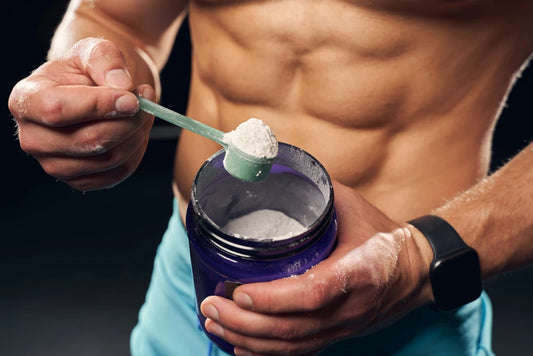

4 Quick Ways To Burn Belly Fat
Table of Contents
4 Quick Ways To Burn Belly Fat
By Laanna Carrasco, MA, Poliquin Group
Reprinted from Muscle Media for Women
Sprinting is a surefire way for women to change their bodies. Sprinting helps to reduce body fat while increasing lean muscle mass so that women raise the amount of calories they burn daily. Sprint training also pairs well with strength training to improve athletic performance and functional capacity. The result is that if you do it right, sprinting will significantly improve your physique, health, and performance. Recent research done on women shows how training parameters must differ from those used by men in order to get the best outcomes. This article will review the sprinting research and provide guidelines for females to effectively maximize sprinting results.
#1: Favor sprint training over steady-state exercise for fat loss.

A lot of women make the mistake of relying on steady-state cardio to reduce body fat. They generally end up disappointed because the effect of aerobic exercise on body fat is negligible. In contrast, high-intensity forms of exercise such as sprinting appear to be much more effective. For example, a 2008 study compared the effect of 20 minutes of cycle sprints with 40 minutes of aerobic exercise in overweight, sedentary young women trained 3 days a week. The sprint protocol was 8 seconds of resisted sprints followed by 12 seconds of low-intensity cycling, repeated 60 times for 20 minutes and the aerobic protocol was 60 percent of maximal oxygen uptake (VO2 Max). A control group that did no exercise was also used. Results showed that the sprint-training group lost an average of 2.5 kg of fat and increased lean muscle mass by 0.6 kg. The women also lost 0.15 kg of belly fat, which looks like a small amount but is significant due to its location around the organs. On the other hand, the aerobic-training group gained an average of 0.4 kg of body fat, while losing about a half kilo of lean mass as well.
Why was sprint training so much more effective than steady-state cardio?
A couple of reasons: First, high-intensity exercise improves the activity of enzymes that enable the body to burn fat. Second, levels of the catecholamine hormones, epinephrine and norepinephrine, increase during sprint training. These hormones enhance the use of fat for fuel and may increase metabolic rate. Third, metabolism was improved more by the end of the study as seen by lower fasting insulin level in the interval trainees. Finally, in some cases, high-intensity training suppresses food intake, whereas aerobic exercise is associated with compensation—a phenomenon in which people who exercise tend to replace any calories burned by eating more than normal. This was not evident in food diaries submitted by participant, but food diaries are notoriously unreliable, so we don’t know for sure.
#2: Get rest intervals right.

We know from studies that compare the effect of rest intervals on strength training performance in men and women that trained women recover more quickly and have a greater work capacity than men
If your goal is fat loss, use a larger work-to-rest ratio to produce greater metabolic stress. Try 1 to 2 minute intervals at 80 to 90 percent of maximal with a 2:1 or 3:1 work-to-rest ratio. A place to start is with 1-minute intervals with 30 seconds active rest.
#3: Sprint against resistance.
 Sprinting against resistance may be superior to free sprints done on a track or spin bike because it triggers protein synthesis and builds muscle. Running or cycling without resistance might not produce as dramatic an increase because the time under tension, which stimulates muscle growth, is inadequate. For example, a 2014 study had normal-weight, college-age women do a running Wingate protocol of 30-second running intervals on a self-propelled treadmill—a motion that mimics sprinting with a weighted sled.
Sprinting against resistance may be superior to free sprints done on a track or spin bike because it triggers protein synthesis and builds muscle. Running or cycling without resistance might not produce as dramatic an increase because the time under tension, which stimulates muscle growth, is inadequate. For example, a 2014 study had normal-weight, college-age women do a running Wingate protocol of 30-second running intervals on a self-propelled treadmill—a motion that mimics sprinting with a weighted sled.
The increase in muscle is noteworthy because it will help sustain metabolic rate during fat loss so that the dreaded rebound fat gain is avoided. In addition, 0.6 kg is a significant amount of lean mass for only 6 weeks of sprinting—measurable muscle development typically takes at least that long to appear, and that’s in response to high-volume hypertrophy-type weight training.
If you’re not regularly lifting heavy weights, do your sprints against resistance. Running intervals can be done on a Woodway treadmill, or try weighted sled sprints, cycle ergometer sprints on an Airdyne bike, or modified strongman exercises such as weighted sled training.
Meckel, Y., et. al. Hormonal and Inflammatory Responses to Different Types of Sprint Interval Training. Journal of Strength and Conditioning Research. 2011. 25(8): 2161-9.
MUSCLE MEDIA MAGAZINE FOR WOMEN
The premier source of training, nutrition, supplements, fat loss and health for women.

















